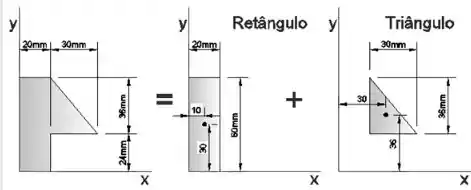Determine o centroide das áreas planas a seguir.

Passo 1
Oi pessoal, tudo bem? Vamos analisar essa questão.
Vamos subtrair as superfícies conforme a figura abaixo:

Conforme eixo de coordenadas, amnos os retângulos têm coordenadas positivas. Calculando-se os momentos estáticos das superfícies indicadas anteriormente, conforme equação compacta a seguir:
Passo 2
Agora, vamos construir a tabela para podermos definir o centroide da figura:

Passo 3
Com as informações obtidas na tabela anterior, podemos definir o centroide da figura, em que:
Substituindo os valores da tabela, temos que:
E: